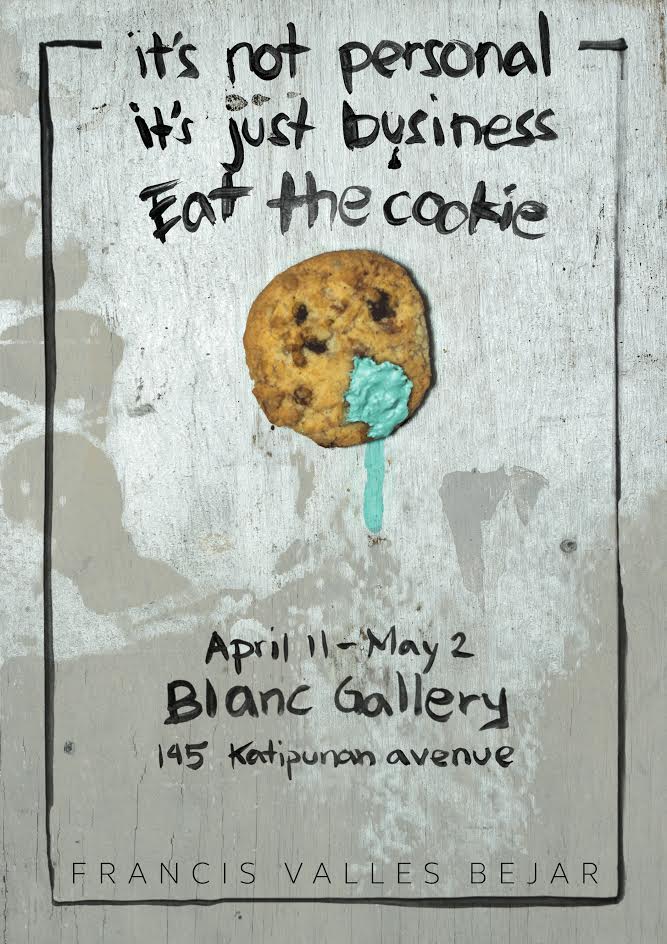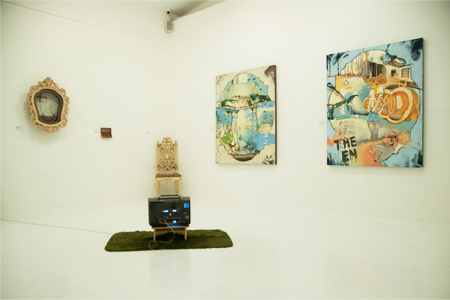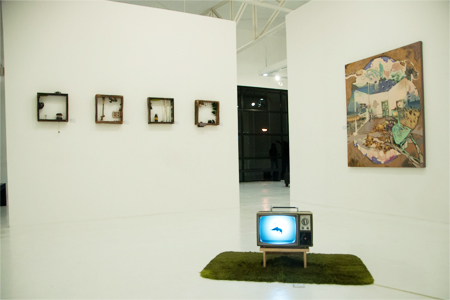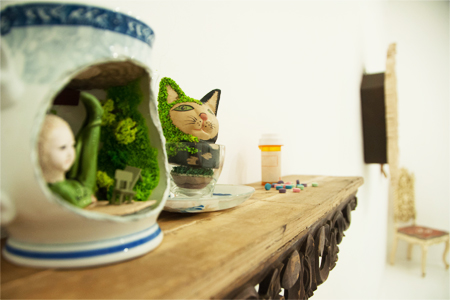
It’s Not Personal, It’s Just Business, Eat the Cookie
Francis Bejar
Fairy tales, fables and stories for children, which fall under fiction, presents worlds that can be considered parallel to the realities in which they exist. Until such time that things are revealed, the mind exists in between worlds separated by glass walls. It is the subjectivity and plurality of worlds in tales of fiction that provide consolation and possibility, but also uncertainty: which one is real? Is this all illusory? Who is behind (or above) all this? In Francis Bejar’s It’s Not Personal, It’s Just Business, Eat the Cookie, a wonderfully whimsical yet morbidly puzzling world hides behind or within mundane objects: television screens, jars, and boxes. This form also lends the figures a sense of being aware of a presence or existence beyond them: the wolf dressed as Little Red Riding Hood poses: in Bejar’s narrative Riding Hood has been eaten and the once yellow hood became red from the bloodshed, a frog has its head raised as if to show the face beneath his chin, a puppet seems to be pulling the same strings which
had moved him (and, as reference to Pinnochio, his long nose has grown into a tree branch). Bejar plays upon the idea of who is master in a piece of fiction, conversely, over the destinies of people. Given the suggestion of a higher power whether in the form of a writer or god (or curator), the artist answers to this with figures who are self-aware and who would pull the strings back, moving the master, perhaps even outsmarting them. The artists also sees repercussions of this concept on politics: of keeping beautiful facades to conceal the darkness and bleakness that pervades its inner life and narrative.
Zeny Recidoro
WORKS
DOCUMENTATION





















